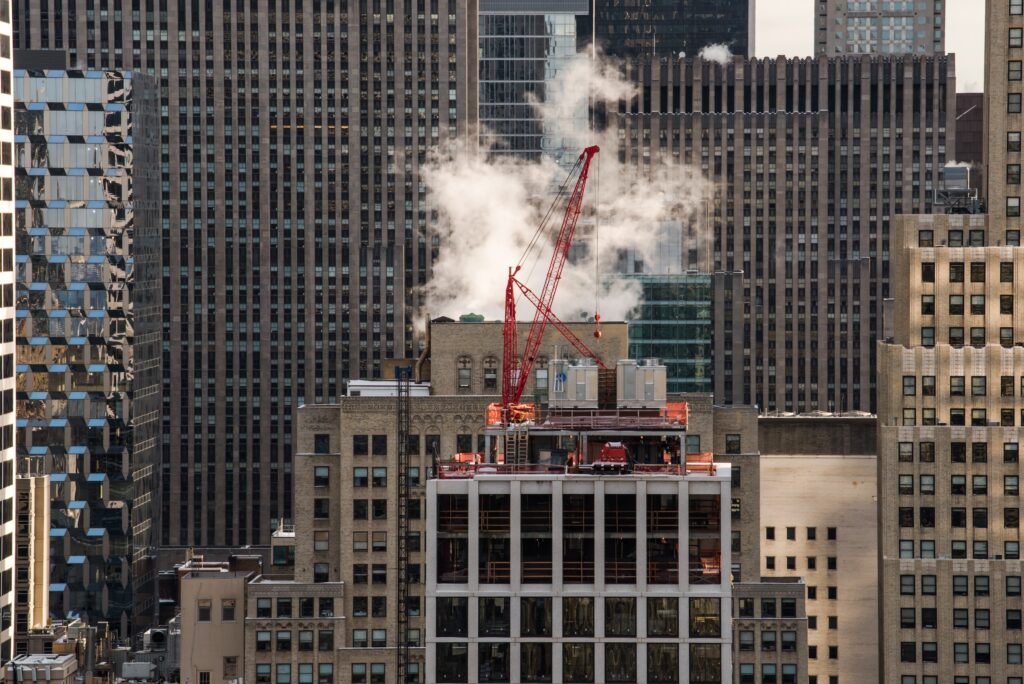A zero emissions building is not as easy to define as you may think. Should it include embodied carbon, for example, should efficiency and clean energy generation be specific parts of the definition or should it simply refer to the level of emissions, whatever the approach? These are the kinds of questions being discussed in the White House today after President Biden announced his intentions to set a common definition of a zero emissions building for the entire US market.
“Given the conversations taking place around net-zero emissions, what the White House has realized is that there’s a need to have a common definition that the market can align with,” Liz Beardsley, senior policy counsel at the US Green Building Council said. “Investors, financiers, real estate companies and facilities managers would then have that common definition to understand where a given portfolio is with zero-emission buildings.”
The responsibility of defining a zero emissions building will go to the Department of Energy (DoE), which intends to publish the definition in January 2024. Between now and then, they will conduct a series of stakeholder engagement meetings to work out various elements of the definition, such as what on-site emissions means, what’s possible with existing buildings, and what actually counts as “clean energy”.
Once you consider the nuances of a definition and the stakeholders involved, you begin to see the scale of the challenge facing the White House and DoE. A definition that is too strong and specific risks backlash from a real estate community that is already struggling in the wake of the pandemic. While, a definition that is too weak and vague risks backlash from the environmental community questioning the administration's commitment to fighting climate change.
By announcing the intention to define zero emissions buildings for the nation, President Biden has put himself between a rock and a hard place, destined for resistance whatever the result. One unofficial report claims the new definition will have “three pillars,” addressing energy efficiency, on-site emissions, and renewable energy, but this still leaves significant room for specificity and vagueness. We will have to wait until January to see the result.

Zero Emissions Building
Another important question is, does it really matter? This final definition is in no way legally binding for states, property developers, or individual buildings, it simply provides a framework for stakeholders to gauge their zero emissions approach on a national level. If the final definition is too hard to achieve then buildings will just continue to develop at their own pace, but if the definition is not green enough then Biden may lose some popularity in the environmental community. Suggesting that a greener definition is more likely in the current climate.
“A lot of the new building construction is taking place in states that would be likely to not go along with any of the recommendations coming out of this proposed definition,” said James Coleman, a nonresident senior fellow at the American Enterprise Institute. “And it’s harder for existing buildings to meet any kind of newer energy efficient standards. They’re facing really difficult trade-offs — how much they must invest in adopting more efficient, but more expensive, technology.”
The political landscape is also an important element. President Biden’s strong zero emissions policies on federal buildings, signing an executive order in 2021, show his green intentions. However, addressing the wider US building stock requires support from a Republican controlled US Congress, which seems unlikely. Hence the non-legal definition of a zero emissions building coming in January, but it’s still a positive step.
A federal definition of a zero emissions building could provide much needed uniformity and consistency to the fragmented US regulatory landscape. The ideal federal definition of zero emissions would be one that provides low-capital approaches to energy efficiency and renewable generation but demands strictly zero emissions. Such a definition would support rather than instruct real estate developers in reaching zero emissions, and would show a strong yet pragmatic approach to environmental challenges.
“Getting to zero emissions does not need to be a premium product. We know how to do this,” states White House National Climate Adviser Ali Zaidi. “It just has to get to scale, which I think a common definition will facilitate.”



